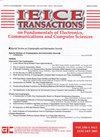远程管理设备蜜罐对人工操作访问的观察
IF 0.4
4区 计算机科学
Q4 COMPUTER SCIENCE, HARDWARE & ARCHITECTURE
Ieice Transactions on Fundamentals of Electronics Communications and Computer Sciences
Pub Date : 2023-01-01
DOI:10.1587/transfun.2023cip0018
引用次数: 0
摘要
近年来,针对基础设施的网络攻击日益严重。不幸的是,据报道,基础设施具有易受攻击的远程管理设备,允许攻击者控制基础设施。针对基础设施的目标攻击是由人类攻击者手动执行的,而不是由自动化脚本执行的。在这里,有待解决的问题是针对此类基础设施的攻击发生的频率,以及攻击者在入侵后做了什么。在本实证研究中,我们使用定制的基础设施蜜罐来观察访问,包括攻击和安全调查活动。提议的蜜罐包括(1)一个可以轻松部署真实设备作为蜜罐的平台,(2)一个通过更改每个蜜罐实例在web上显示的设施名称来增加虚拟设施数量的机制,(3)一个与访问者的交互机制,以推断其目的,以及(4)跟踪机制,以识别长期活动的访问者。我们用了31个月的时间来实施和部署蜜罐。我们的蜜罐观察到关键操作,例如更改远程管理设备的配置。我们还观察到蜜罐的web和Telnet服务的长期访问。本文章由计算机程序翻译,如有差异,请以英文原文为准。
Observation of Human-operated Accesses using Remote Management Device Honeypot
In recent years, cyber attacks against infrastructure have become more serious. Unfortunately, infrastructures with vulnerable remote management devices, which allow attackers to control the infrastructure, have been reported. Targeted attacks against infrastructure are conducted manually by human attackers rather than automated scripts. Here, open questions are how often the attacks against such infrastructure happen and what attackers do after intrusions. In this empirical study, we observe the accesses, including attacks and security investigation activities, using the customized infrastructure honeypot. The proposed honeypot comprises (1) a platform that easily deploys real devices as honeypots, (2) a mechanism to increase the number of fictional facilities by changing the displayed facility names on the WebUI for each honeypot instance, (3) an interaction mechanism with visitors to infer their purpose, and (4) tracking mechanisms to identify visitors for long-term activities. We implemented and deployed the honeypot for 31 months. Our honeypot observed critical operations, such as changing configurations of a remote management device. We also observed long-term access to WebUI and Telnet service of the honeypot.
求助全文
通过发布文献求助,成功后即可免费获取论文全文。
去求助
来源期刊

CiteScore
1.10
自引率
20.00%
发文量
137
审稿时长
3.9 months
期刊介绍:
Includes reports on research, developments, and examinations performed by the Society''s members for the specific fields shown in the category list such as detailed below, the contents of which may advance the development of science and industry:
(1) Reports on new theories, experiments with new contents, or extensions of and supplements to conventional theories and experiments.
(2) Reports on development of measurement technology and various applied technologies.
(3) Reports on the planning, design, manufacture, testing, or operation of facilities, machinery, parts, materials, etc.
(4) Presentation of new methods, suggestion of new angles, ideas, systematization, software, or any new facts regarding the above.
 求助内容:
求助内容: 应助结果提醒方式:
应助结果提醒方式:


